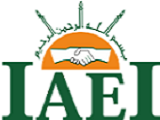Does Banking in Indonesia tend to be Concentrated?
Abstract
The banking in Indonesia has undergone several changes in the market structure that ultimately impacts the prevailing policies and regulations. This study aims to examine the impact of changes in the banking market structure identified through the level of market concentration in the banking environment and examine the factors that influence the level of concentration of the banking market from 2005 to 2016. The study also examined the impact of changes in banking structure during the global crisis. The measurement of banking concentration used in this study is the Herfindahl-Hirschman Index (HHI). Furthermore, the influential factors consist of: (1) Bank specification, including bank size (Size), credit risk (NPL), profitability (ROE), banksoundness(CAR),(2)Market specification,namely the number of standingbank (NUM), and (3) Global crisis. The study used GLS (Generalized Least Square) method to detect autocorrelation on each variable.The results show that banks in Indonesia tended to have a low level of market concentration. The results are also in accordance with the SCP paradigm which states that banks tend to generate high profits when the level of banking market concentration is high.
Keywords : Market Concentration, Competition, Dual-Banking, Bank Specification, Market Specification, Global Crisis.
Keywords
Full Text:
PDFReferences
Ariss, T. R. (2010). Competitive Condition in Islamic and Conventional Banking: A Global Perspective. Review of Financial Economics. 19 (2010). Page 101-108.
Bikker, A, Shaffer, A, & Spierdijk, L. (2009). Assessing Competition with the Panzar-Rose Model: The Role of Scale, Costs, and Equilibrium. Review of Economics and Statistics. January 2009.
Hendra, N.T.S, & Hartomo, D. . (2017). Pengaruh Konsentrasi dan Pangsa Pasar Terhadap Pengambilan Risiko Bank. Jurnal Bisnis & Manajemen. Vol. 17, No. 2, 2017. Page 35-50.
Lubis, F. A. (2012). Market Power Perbankan Indonesia. Buletin Ekonomi Moneter Dan Perbankan. Januari 2012.
Maharani, N.K, & Setiyono, B. (2018). Do Risk, Business Cycle, and Competition Affect Capital Buffer? An Empirical Study on Islamic Banking in ASEAN and MENA. Journal of Islamic Monetary Economics and Finance. Vol 3, No. 2 (2018) February.
Mamatzakis, E, Staikouras, C, & Fillipaki, N. (2005). Competition and Concentration in the Banking Sector of the South Eastern European Region. Emerging Markets Review. 6. (2005). Page 192-209.
Nafisah, M, Ismail, G.A, & Muhammad, J. (2015). No TitleaEvidence on Market Concentration in Malaysian Dual Banking System. Procedia-Social and Behavioral Finance. 172 (2015). Page 169-176.
Pujianti, R. (2016). Analisis Struktur Pasar Perbankan dan Stabilitas Perbankan di Indonesia (Sebelum dan Sesudah Kebijakan Arsitektur Perbankan Indonesia). Jurnal Ekonomi Pembangunan. Vol. 5, No. 2. Juli 2016. Page 217-238.
Sato, Y. (2005). Bank Restructuring and Financial Institution Reform in Indonesia. The Developing Economics. XLIII-1. Maret 2005. Page 91-120.
Sinansari, P, Priyarsono, DS, & Supriyatno, G. (2015). Analysis of Indonesia Banking Structure. International Journal of Science and Research. Vol. 6. Juli 2017.
Widyastuti, S.R, & Armanto, B. (2013). Banking Industry Competition in Indonesia.
Yudaruddin, R. (2014). Dampak Tingkat KonsentrasiTerhadapKinerja dan StabilitasPerbankan di Indonesia tahun 2003-2013. Jurnalkeuangan Dan Perbankan. Vol. 18, No. 2 Mei 2014. 278-286.
DOI: http://dx.doi.org/10.24042/febi.v4i2.4811
Refbacks
- There are currently no refbacks.
Copyright (c) 2019
Ikonomika : Jurnal Ekonomi dan Bisnis Islam is a Journal of Islamic Economics and Business, Published by the Faculty of Islamic Economics and Business at UIN Raden Intan Lampung Indonesia. This work is licensed under a Creative Commons Attribution-ShareAlike 4.0 International License.






11.png)


